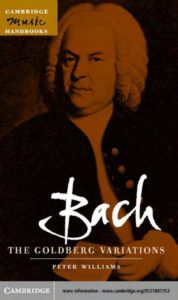Come join us now, and enjoy playing your beloved music and browse through great scores of every level and styles!
Can’t find the songbook you’re looking for? Please, email us at: sheetmusiclibrarypdf@gmail.com We’d like to help you!
J. S. Bach Air on the G String Piano solo arrangement from BWV 1068 with sheet music
Table of Contents

“Air on the G String”
Please, subscribe to our Library.
If you are already a subscriber, please, check our NEW SCORES’ page every month for new sheet music. THANK YOU!
“Air on the G String”, also known as “Air for G String” and “Celebrated Air”, is August Wilhelmj’s 1871 arrangement of the second movement of Johann Sebastian Bach’s Orchestral Suite No. 3 in D major, BWV 1068.
The arrangement differs from the original in that the part of the first violins is transposed down so that it can be played entirely on a violin’s lowest string, i.e., the G string. It is played by a single violin (instead of by the first violins as a group).
Bach’s original
Bach’s third Orchestral Suite in D major, composed in the first half of the 18th century, has an “Air” as second movement, following its French overture opening movement. The suite is composed for three trumpets, timpani, two oboes, strings (two violin parts and a viola part), and basso continuo. In the second movement of the suite however only the strings and the continuo play. This is the only movement of the suite where all other instruments are silent.
The music of the “Air” is written on four staves, for first and second violins, viola(s), and continuo. The interweaving melody lines of the high strings contrast with the pronounced rhythmic drive in the bass.
In 1871, violinist August Wilhelmj arranged the second movement of Bach’s third Orchestral Suite for violin and an accompaniment of strings, piano or organ (harmonium). On the score he wrote auf der G-Saite (on the G string) above the staff for the solo violin, which gave the arrangement its nickname.
Wilhelmj’s arrangement
In Wilhelmj’s version the piece is transposed down from its original key (D major) to C major. Then the part of the first violins is transposed further down an octave and given to a solo violin that can play the entire melody on its lowest string, the G string. The dynamic markings added by Wilhelmj are more in line with a romantic interpretation than with the baroque original.
As a violin can’t play very loudly in its lowest register, all the other parts of Bach’s music were firmly reduced in Wilhelmj’s version: the keyboard part is to be played staccato and pianissimo, causing the effects of interweaving melodies and of drive in the bass part to get lost. The accompanying violins and violas play muted (con sordino), and the bass part for cellos and double basses is to be played pizzicato and sempre pianissimo, with the same change in effect compared to Bach’s original.
Later, a spurious story circulated that the melody was always intended to be played on the G string alone. The solo violin part of Wilhelmj’s arrangement is sometimes played on the counter-tenor violoncello.
As a result of the popularity of the piece, on the G string remained in the name of various arrangements whether or not a string instrument playing on its G string was involved. Most of these versions have in common that the original melody of the first violins is played in the low register of a solo instrument, accompanied by a reduction of the material of the other parts of Bach’s piece, although occasionally versions that stay more in line with Bach’s original can go by the same name.
In a period that stretched over three decades, and started in 1905, Henry Wood regularly programmed Wilhelmj’s arrangement at the London Proms. Wood recorded his orchestral rendering (i.e., the G string part performed by a group of violins) of the Bach/Wilhelmj “Air” in the early 1930s.
Download a selection of the best classical sheet music from our Library.
Browse in the Library:
Or browse in the categories menus & download the Library Catalog PDF:
Air on the G string has an interesting origin story:
At the end of the 19th century, the German violinist August Wilhelmj (1845-1908) decided to arrange the aria from the ‘Suite for Orchestra in D major’ BWV 1068 for violin and piano. The second movement of Bach’s third orchestral suite is a slow movement in 4/4 time and Bach originally wrote the piece for solo violin and string orchestra.
Wilhelmj transposed the entire solo section, a jewel of lyrical music, to C so that it can be played comfortably on the G string, the fourth and lowest string of the violin, which has a peculiar, dark and romantic timbre. He wrote the harmonic parts for piano. Although the melody was later transcribed for many other instruments, such as the flute, the title ‘Air on the G String’ stuck.
